If a prospect says, “Tell me about your company,” and you launch into a polished elevator pitch, you’ve already lost momentum. Discovery isn’t an audition—it’s an investigation. The best sellers listen their way in when you get genuinely curious about a prospect’s world, the pitch, proposal, and close fall into place naturally.
Why Discovery Calls Fail (And How to Avoid It)
Most discovery calls go off-track for one reason: assumptions. We show up ready to solve problems we haven’t heard yet. We hear “budget” and push ROI slides. We hear “efficiency” and rattle off features. Prospects feel sold to, not understood.
Flip the script: your job is to uncover the business problem, the urgency behind it, and the success criteria that will define a win. Think like a consultant, not a catalog.
Prep That Actually Moves the Needle
Preparation is context. Before you dial:
- Scan the website and LinkedIn for positioning, recent wins, and hiring patterns.
- Note any press, product launches, funding, or leadership changes.
- Map likely stakeholders and influencers.
Walk in with three hypotheses and five questions, not a 20-slide deck. If you can reference their Q3 comments or a recent market shift and then ask a sharper question, you’ll earn attention fast.
Quick productivity tip: If you work from a coworking space, book a quiet meeting room and run your call from a clean setup. Use your space’s shared CRM booth or phone room to keep notes and follow-ups tight and distraction-free.
Questions That Open Real Conversations
Discovery is powered by open, specific questions that surface facts and feelings. Use a simple arc: Now → Impact → Ideal → Obstacles → Next.
- Now: “What’s the current process for [X]? What triggered the search now?”
- Impact: “Where does this slow you down—revenue, cost, risk, or customer experience?”
- Ideal: “If this worked perfectly in six months, what would be different?”
- Obstacles: “What’s blocked this in the past—budget, bandwidth, buy-in?”
- Next: “How do decisions like this get made here? Who else should weigh in?”
Follow with probes: “Can you give me an example?” “What happens if nothing changes by Q4?” “Which metric would make your CFO smile?”
Listen Like a Pro (Not a Note-Taker)
Active listening is a performance skill:
- Label and reflect: “Sounds like onboarding time is the bottleneck, not the tool itself.”
- Summarize in their words: “You want to cut cycle time from 12 to 5 days without adding headcount—right?”
- Validate emotion: “I hear the urgency around the Q4 launch date.”
Pro tip: Silence is a feature. After a strong question, stop talking. Prospects often fill the gap with the real story.
Translate Answers Into a Tailored Path
Great discovery turns into a proposal that reads like it was written from inside the prospect’s Slack. Use their language and priorities:
- Tie to outcomes: “You mentioned reducing support escalations by 30%. Here’s how we do that in the first 60 days.”
- Sequence change: “Phase 1 removes manual steps; Phase 2 automates reporting; Phase 3 trains team leads.”
- Quantify value: “At your volume, a 20% faster cycle saves ~120 hours/month.”
Avoid the “feature parade.” One or two proof points that mirror their exact pain beat a long spec sheet every time.
Common Pitfalls (And Simple Fixes)
- Talking too soon: If you’re explaining before you’ve asked at least 10–12 minutes of questions, you’re early.
- Skipping recap: Always recap what you heard and ask, “Did I miss anything important?”
- Forcing fit: If the problem isn’t your lane, say so and refer them. Trust grows faster than pipeline shrinks.
Tools & Rituals That Keep You Sharp
- Question bank: Keep a living list of 20–30 discovery questions grouped by problem type (cost, risk, growth).
- Template notes: Use a simple doc: Goal, Current State, Metrics, Stakeholders, Obstacles, Timeline, Next Steps.
- Call hygiene: Calendar-block 10 minutes post-call for tidying notes, logging CRM updates, and sending the recap email.
- Environment: Book a quiet space (a coworking meeting room works great), test your mic, and keep your deck closed until you need it.
Land the Plane: Clear Next Steps
Clarity builds confidence. Close every discovery with:
- Recap: “Here’s what I heard—goal, constraints, success metric.”
- Plan: “I’ll send a one-page brief aligning on scope and an implementation path.”
- People: “Let’s include Ops and Finance in the next call to verify assumptions.”
- Calendar: “How does Thursday 3 PM work for a 30-minute working session?”
Send a same-day recap email that mirrors your summary and confirms owners and dates. It signals professionalism and keeps momentum high.
The Takeaway
Discovery is the foundation of trust. Show up prepared, ask better questions, listen with intent, and mirror the buyer’s language back in a plan that makes their goals achievable. When you do, you stop “pitching” and start leading. Whether you’re calling from a quiet corner in your office or a private office in a coworking space, the principles stay the same: curiosity first, clarity next, value always.











